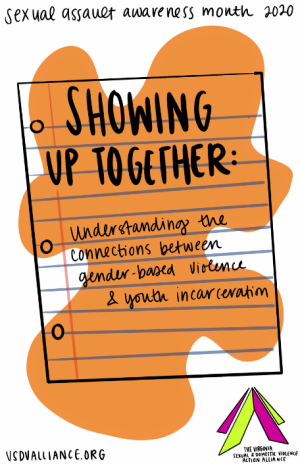Resources Library: Intervention & Services
Start a Search:
Responding to the Needs of LGBTQ People of Color Experiencing SV, IPV, or Stalking
LGBTQ People of Color experience high levels of trauma, discrimination, violence, and oppression based on race,gender, and sexuality. Understanding how racism, homophobia, and transphobia simultaneously affect LGBTQ People of Color is critical when working to provide culturally relevant services to LGBTQ survivors of violence.
This guide is designed to help providers be more informed about the nuanced and complex realities of LGBTQ People of Color. It is for service providers to use when working to reach LGBTQ people and communities of color who are experiencing violence in their lives. It is not a one-size fits all guide but rather a tool that aims to provide context as well as action steps for reaching these communities.
Securing Devices and Accounts - a new resource from NNEDV and Norton

NNEDV is excited to announce a new resource in partnership with Norton (yes, the folks who do data security). Their new resource "Securing Devices and Accounts" is a privacy-and-security-focused guide for survivors of abuse, stalking, and other gender-based violence.
You can read more about the partnership and the resource launch on Norton’s blog and download the resource below.
Sexual Assault Awareness Month 2020: Showing Up Together

For Sexual Assault Awareness Month 2020, the Action Alliance created resources to highlight the connections between gender-based violence and youth incarceration. With our partners Performing Statistics and RISE for Youth, national and state-wide organizations dedicated to ending youth incarceration and building campaigns around #NoKidsInPrison, Showing Up Together: Understanding the Connections Between Gender-Based Violence & Youth Incarceration is a graphic pamphlet for advocates, preventionists, and people in community working to support survivors of violence and build towards a world free of violence and free of youth prisons.
Sexual Assault Demonstration Initiative - Publications and E-Learning Tools
As originally published by the National Sexual Violence Resource Center, the Sexual Assault Demonstration Initiative (SADI), the first large scale project of its kind, was created to enhance sexual assault outreach, services, and community partnerships in dual/multi-service programs. Six sites across the nation engaged in a four-year process of assessment, planning, and implementation of new and enhanced services and organizational capacity building. The materials that were developed based on the lessons learned across project sites can be found at https://www.nsvrc.org/sexual-assault-demonstration-initiative, many of which are avaiable in English and Spanish.
Topics include:
- - Foundations of Advocacy
- - Culturally Relevant Services for Tribal Communities and Communities of Color
- - Picturing Your Program: Planning for Organizational Growth
- - Listening to Survivors - Essential Steps for the Intake Process
- - Comprehensive Services for Survivors of Sexual Violence
- - Throw Away the Menu: Broadening Advocacy
- - It Matters! How Defining Sexual Violence Defines Advocacy Programs
- - Building Cultures of Care
- - Listening to Our Communities: Assessment Toolkit
- - Trauma-Informed Care
- - Lessons for Local Programs & SADI Timeline Overview
-
- and the Final Report
What is the Sexual Assault Demonstration Initiative (SADI) - Watch this brief overview to learn more about the Sexual Assault Demonstration Initiative (SADI) and the lessons learned from this national project.
Sexual Violence in Later Life
This four page document outlines specific information on the broad range of offenses perpetrated against people age 60 and beyond, and discusses how advocates can respond to the special needs of older sexual violence victims.

